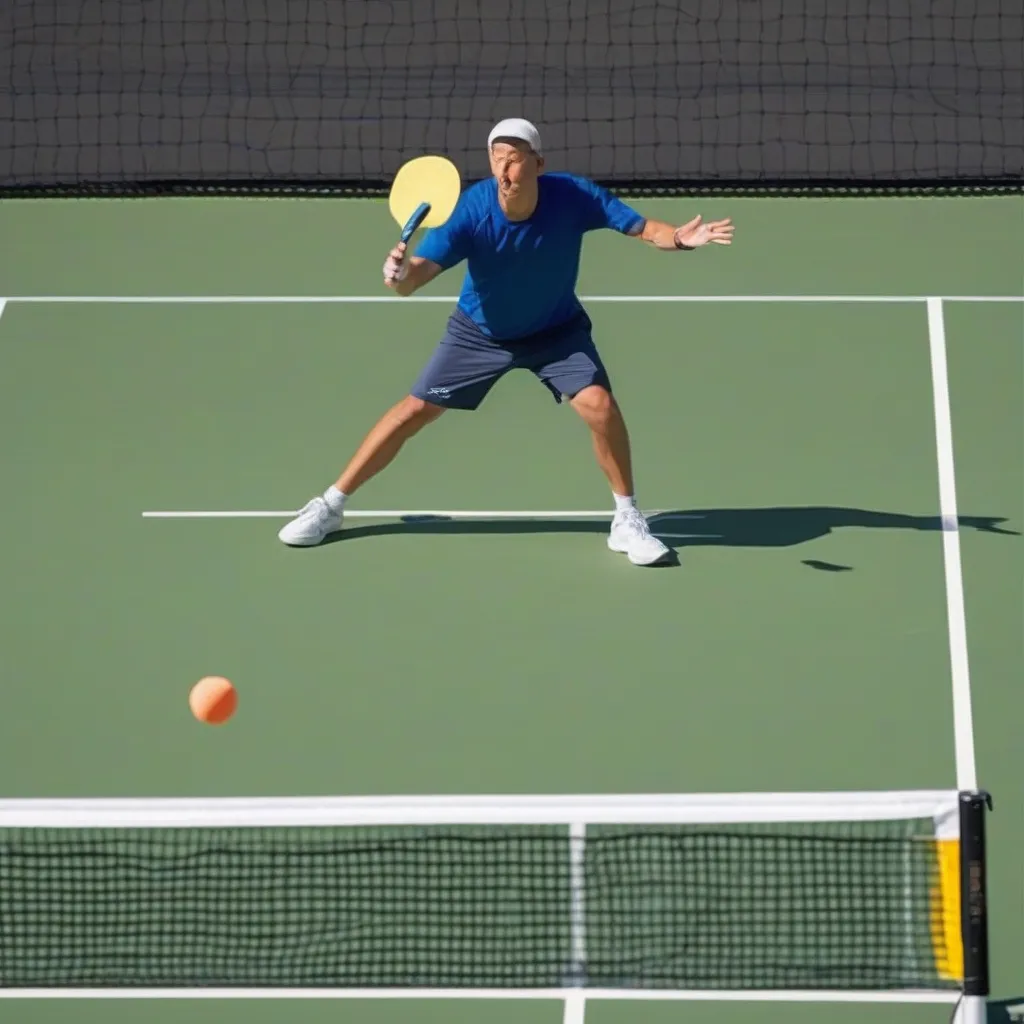Imagine this: you’re locked in a thrilling pickleball rally, the thwack of the paddle echoing across the court. You’ve got your opponent on the ropes, but they keep returning your shots, seemingly effortlessly. What’s missing? Strategic shot depth variation. Mastering this key element can transform your game, pushing your opponent off balance and creating opportunities to finish the point. This article will delve into the intricacies of strategic shot depth variation, providing actionable tips and techniques to elevate your pickleball prowess.
Understanding Shot Depth in Pickleball
Shot depth refers to how far the ball travels towards your opponent’s baseline. A deep shot lands near the baseline, pushing your opponent back, while a short shot lands close to the net, drawing them forward. Varying the depth of your shots is crucial for keeping your opponent guessing, disrupting their rhythm, and dictating the flow of the game.
Why is Shot Depth Variation Important?
- Control the Court: Deep shots push your opponent back, giving you more time to react and set up for the next shot.
- Create Offensive Opportunities: Short shots draw your opponent forward, opening up angles for put-away volleys.
- Disrupt Your Opponent’s Rhythm: Alternating between deep and short shots prevents your opponent from establishing a consistent pattern of play.
- Keep Your Opponent Guessing: Unpredictability is key in pickleball. If your opponent doesn’t know where your next shot is going, they’ll be forced to react, increasing the chance of errors.
Strategies for Varying Shot Depth
Effectively varying your shot depth isn’t just about randomly hitting deep and short shots. It’s about using a strategic approach that considers your opponent’s position, your court positioning, and the overall game situation.
1. The Deep-Short Combo
This classic combination is a cornerstone of strategic pickleball. Start with a deep shot, pushing your opponent back to the baseline. Then, follow it up with a well-placed drop shot or dink, drawing them forward and creating an opportunity for a volley winner.
2. Exploiting Weaknesses
Observe your opponent’s game. Are they uncomfortable with deep shots? Do they struggle with volleys at the net? Tailor your shot depth strategy to exploit their weaknesses. If they struggle with deep shots, keep them pinned to the baseline. If they are weak at the net, draw them in with short shots.
3. Using the Third Shot Drop
The third shot drop is a common tactic in pickleball. After the serve and return, the serving team often executes a drop shot, forcing the receiving team to come forward and potentially setting up a volley.
4. The Lob
The lob is a high, deep shot that goes over your opponent’s head, forcing them to retreat to the back of the court. This can be an effective way to reset the point, give yourself time to recover, or create an offensive opportunity if your opponent misjudges the lob.
Drills for Improving Shot Depth Control
Practicing specific drills can significantly improve your shot depth control. Here are a few to try:
- Deep-Short Drill: Practice alternating between deep and short shots, focusing on accuracy and consistency.
- Target Practice: Place targets on the court at different depths and practice hitting them.
- Game Situations: Simulate game scenarios with a partner, focusing on using strategic shot depth variation.
Common Mistakes to Avoid
- Overhitting: Trying to hit too hard can lead to shots going long. Focus on control and placement.
- Being Predictable: Vary your shots. Don’t fall into a pattern that your opponent can easily anticipate.
- Ignoring Court Positioning: Consider your position on the court and your opponent’s position when choosing your shot depth.
 Strategic Shot Depth Variation in Pickleball
Strategic Shot Depth Variation in Pickleball
Advanced Tips for Strategic Shot Depth Variation
- Disguise Your Shots: Make your deep and short shots look similar initially to deceive your opponent.
- Use the Wind: If playing outdoors, take the wind into account when choosing your shot depth.
- Communicate with Your Partner: If playing doubles, communicate with your partner about your intended shot depth.
Conclusion
Mastering strategic shot depth variation is essential for taking your pickleball game to the next level. By understanding the principles and practicing the techniques outlined in this article, you can control the court, create offensive opportunities, and keep your opponent guessing. Remember, consistency and practice are key. So, get out on the court and start experimenting with different shot depths. See what works best for you and your game. We’d love to hear about your experiences! Share your thoughts, questions, and successes in the comments below, and don’t forget to share this article with your fellow pickleball enthusiasts! Consider exploring our related articles on improving court mobility and basic forehand and backhand drills to enhance your overall game. You might also be interested in our guide on basic pickleball court strategy, which complements the concepts discussed here.
- Baker, Joe (Author)
- English (Publication Language)
- Amazon Kindle Edition
- Bond, Payton (Author)
- Hall, Dennis (Author)
- English (Publication Language)
- Callahan, John (Author)
- English (Publication Language)
- Carnot, Prem (Author)
- English (Publication Language)
- Anderson, Brian (Author)
- English (Publication Language)
- Foster, Blake (Author)
- English (Publication Language)
- Dunmeyer, Phil (Author)
- English (Publication Language)
- Baker, Mr. Joe (Author)
- English (Publication Language)
- Biff, Jaden (Author)
- English (Publication Language)









